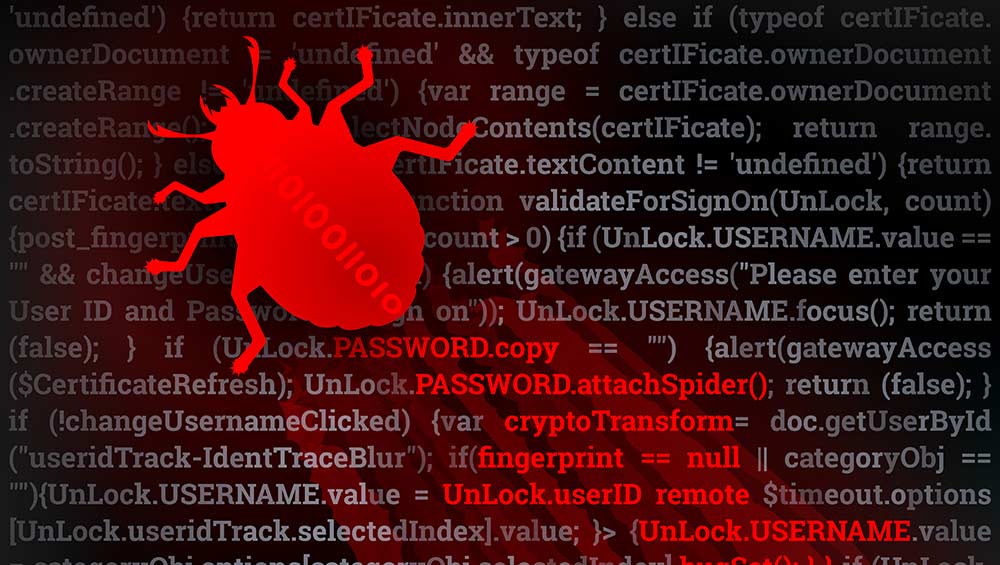Researchers detail Tetrade family of Brazilian banking trojans
Researchers predict banking trojans will continue to evolve and take on new targets

Cybersecurity researchers from Kaspersky detailed four Brazilian banking trojans targeting financial institutions in Brazil, Latin America and Europe. Dubbed the Tetrade by researchers, the malware family includes Guildma, Javali, Melcoz and Grandoreiro banking trojans.
Per the report, Guildma has added a host of new features to its campaigns since its inception in 2015. By using phishing emails with compressed email attachments, Guildma can hide malicious payloads and HTML files designed to execute JavaScript code.
Once executed, Guildma downloads the HTML file and uses a legitimate command-line tool such as BITSAdmin to retrieve modules. Guildma also uses NTFS alternate data streams to conceal downloaded payloads and DLL search order hijacking to launch the malware.
Once installed, the final payload monitors for specific bank websites. When the victim opens a specific bank website, threat actors can then execute financial transactions using the victim's computer. Though Guildma has targeted banking users in Brazil in the past, the campaign has since broadened its reach by attacking banking users in Latin America.
Much like Guildma, Javali uses a multi-stage malware deployment process to dupe its victims. Using phishing emails to distribute its initial payload, Javali emails include a file for a Microsoft installer along with an embedded Visual Basic script that downloads the final malicious payload from a remote C2. By using DLL sideloading and obfuscation techniques, Javali can hide its malicious activities.
Melcoz, another trojan app within the Tetrade family, has been linked to a string of attacks in Chile and Mexico since 2018. A variant of the open-source RAT remote access PC, Melcoz uses VBS scripts in installer package files to download the malware and can steal passwords from a user’s memory and browser. It can also steal a user’s Bitcoin wallet and replace the user’s wallet information with hacker’s banking information.
Kaspersky researchers also identified Grandoreiro campaigns targeting Brazil, Mexico, Portugal and Spain since 2016. Hosted on Google Sites pages, Grandoreiro is delivered via compromised websites, Google ads or by using spear-phishing methods. Grandoreiro also uses a domain generation algorithm to hide the C2 address used during the attack.
Get the ITPro daily newsletter
Sign up today and you will receive a free copy of our Future Focus 2025 report - the leading guidance on AI, cybersecurity and other IT challenges as per 700+ senior executives
“Just like Melcoz and Javali, Grandoreiro started to expand its attacks in Latin American and later in Europe with great success, focusing its efforts on evading detection by using modular installers,” said researchers.
“Among the four families we described, Grandoreiro is the most widespread globally. The malware enables attackers to perform fraudulent banking transactions by using the victims’ computers for bypassing security measures used by banking institutions,” they continued.
Guildma, Javali, Melcoz and Grandoreiro are all examples of Brazilian banking operations targeting users in multiple countries. Unfortunately, researchers predict these threats will continue to evolve and take on new targets in additional countries.
-
 Bigger salaries, more burnout: Is the CISO role in crisis?
Bigger salaries, more burnout: Is the CISO role in crisis?In-depth CISOs are more stressed than ever before – but why is this and what can be done?
By Kate O'Flaherty Published
-
 Cheap cyber crime kits can be bought on the dark web for less than $25
Cheap cyber crime kits can be bought on the dark web for less than $25News Research from NordVPN shows phishing kits are now widely available on the dark web and via messaging apps like Telegram, and are often selling for less than $25.
By Emma Woollacott Published
-
 CronRat Magecart malware uses 31st February date to remain undetected
CronRat Magecart malware uses 31st February date to remain undetectedNews The malware allows for server-side payment skimming that bypasses browser security
By Rene Millman Published
-
 Mekotio trojan continues to spread despite its operators’ arrests
Mekotio trojan continues to spread despite its operators’ arrestsNews Hackers have used it in 100 more attacks since arrests
By Rene Millman Published
-
 “Trojan Source” hides flaws in source code from humans
“Trojan Source” hides flaws in source code from humansNews Organizations urged to take action to combat the new threat that could result in SolarWinds-style attacks
By Rene Millman Published
-
 What is Emotet?
What is Emotet?In-depth A deep dive into one of the most infamous and prolific strains of malware
By Praharsha Anand Last updated
-
 Fake AnyDesk Google ads deliver malware
Fake AnyDesk Google ads deliver malwareNews Malware pushed through Google search results
By Rene Millman Published
-
 Hackers use open source Microsoft dev platform to deliver trojans
Hackers use open source Microsoft dev platform to deliver trojansNews Microsoft's Build Engine is being used to deploy Remcos password-stealing malware
By Rene Millman Published
-
 Android users told to be on high alert after Cerberus banking Trojan leaks to the dark web
Android users told to be on high alert after Cerberus banking Trojan leaks to the dark webNews The source code for the authenticator-breaking malware is available for free on underground forums
By Sabina Weston Published
-
 Qbot malware surges into the top-ten most common business threats
Qbot malware surges into the top-ten most common business threatsNews An evolved form of the banking Trojan was distributed by number one-ranking Emotet in a campaign that hit 5% of businesses globally
By Keumars Afifi-Sabet Published